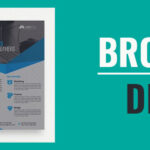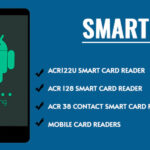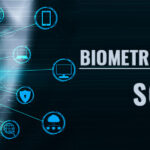
- ACR122U Smart Card Reader
- ACR 128 Smart Card Reader
- ACR 38 Contact Smart Card Reader
- Mobile Card Readers
- AET60 BioCARDKey
- RFID Reader
- Magstripe Reader
- ACR120 Contactless Smart Card Reader
What is a Smart Card?
A smart card is a card that is embedded with either a microprocessor and a memory chip or only a memory chip with non-programmable logic. The microprocessor card can add, delete, and otherwise manipulate information on the card, while a memory-chip card (for example, pre-paid phone cards) can only undertake a pre-defined operation.
Smart cards, unlike magnetic stripe cards, can carry all necessary functions and information on the card. Therefore, they do not require access to remote databases at the time of the transaction.
Today, there are three categories of smart cards, all of which are evolving rapidly into new markets and applications:
Integrated Circuit (IC) Microprocessor Cards. Microprocessor cards (also generally referred to by the industry as “chip cards”) offer greater memory storage and security of data than a traditional mag stripe card. Chip cards also can process data on the card. The current generation of chip cards has an eight-bit processor, 16KB read-only memory, and 512 bytes of random-access memory. This gives them the equivalent processing power of the original IBM-XT computer, albeit with slightly less memory capacity.
These cards are used for a variety applications, especially those that have cryptography built in, which requires manipulation of large numbers. Thus, chip cards have been the main platform for cards that hold a secure digital identity. Some examples of these cards are:
- Cards that hold money (“stored value cards”)
- Card that hold money equivalents (for example, “affinity cards”)
- Cards that provide secure access to a network
- Cards that secure cellular phones from fraud
- Cards that allow set-top boxes on televisions to remain secure from piracy.
Integrated Circuit (IC) Memory Cards. IC memory cards can hold up to 1-4 KB of data but have no processor on the card with which to manipulate that data. Thus, they are dependent on the card reader (also known as the card-accepting device) for their processing and are suitable for uses where the card performs a fixed operation.
Memory cards represent the bulk of the 600 million smart cards sold last year, primarily for pre-paid, disposable-card applications like pre-paid phone cards. Memory cards are popular as high-security alternatives to mag stripe cards.
Optical Memory Cards. Optical memory cards look like a card with a piece of a CD glued on top – which is basically what they are. Optical memory cards can store up to 4 MB of data. But once written, the data cannot be changed or removed. Thus, this type of card is ideal for record keeping – for example, medical files, driving records, or travel histories. Today, these cards have no processor in them (although this is coming in the near future). While the cards are comparable in price to chip cards, the card readers use non-standard protocols and are expensive.
A smartcard is a plastic card containing a small chip that includes a microprocessor and memory. The same size as a credit card, it has gold contacts that allow other devices to communicate with the card. It can contain more data than a magnetic strip and can be programmed to reveal only the relevant information. For example, it could tell a device in a store that there is sufficient balance in an account to pay for a transaction without revealing the balance amount. Encryption techniques secure the data, and the processor allows it to be programmed for different applications.















Recent Comments